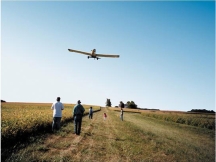When corn was knee high this spring, a growing number of producers tried “interseeding” annual ryegrass into the cash corp. We’ve talked about interseeding before and will continue to cover it as we gain more experience in field trials throughout the northern cornbelt.
Interseeding means planting annual ryegrass, or another cover crop seed, into standing corn early in the season, in this case June. The practice has become quite popular in southern Canada, above the Great Lakes.
In this photo, a grower has mounted a Gandy linear seeder on an old rotary harrow, with some of its tines removed. In this case, the grower was able to cover about 20 feet in one pass. The retrofit cost him about $11,000.
So far, only a small number of cover crop advocates in the US have tried interseeding, but more education about how and where to plant will entice others to try it too. The advice at this point is that if you’re located north of I-70 or, roughly, north of Indianapolis, you have a good chance of interseeding being profitable.
The reason a cover crop like annual ryegrass will work in those conditions are these:
- Planted in the spring, even if wet like this year, annual ryegrass will germinate under the foliage of immature corn.
- Later, with corn shading the ground beneath, the annual ryegrass will go semi-dormant.
- After harvest this fall, the added light will jumpstart the cover crop again and, with established roots from the spring, the ryegrass will have a better chance of weathering a difficult Midwest winter.
There are some distinct advantages of this kind of cover cropping system. First is timing. Fall time is often busy with harvest activities, hence cover crop seeding can get left until too late. Or, even if aeriel seeding into standing corn, if the Midwest is experiencing dry weather, cover crops can struggle to get established in the fall.
But there are also cautions about this type of cover cropping. First, if the summer is dry, the combination of no light and no water for the young cover crop, it can perish in the field before corn is harvested. Secondly, there are still questions about whether this kind of crop would jeopardize a farmer being able to qualify for insurance payments, should there be a crop failure because of drought, say.








